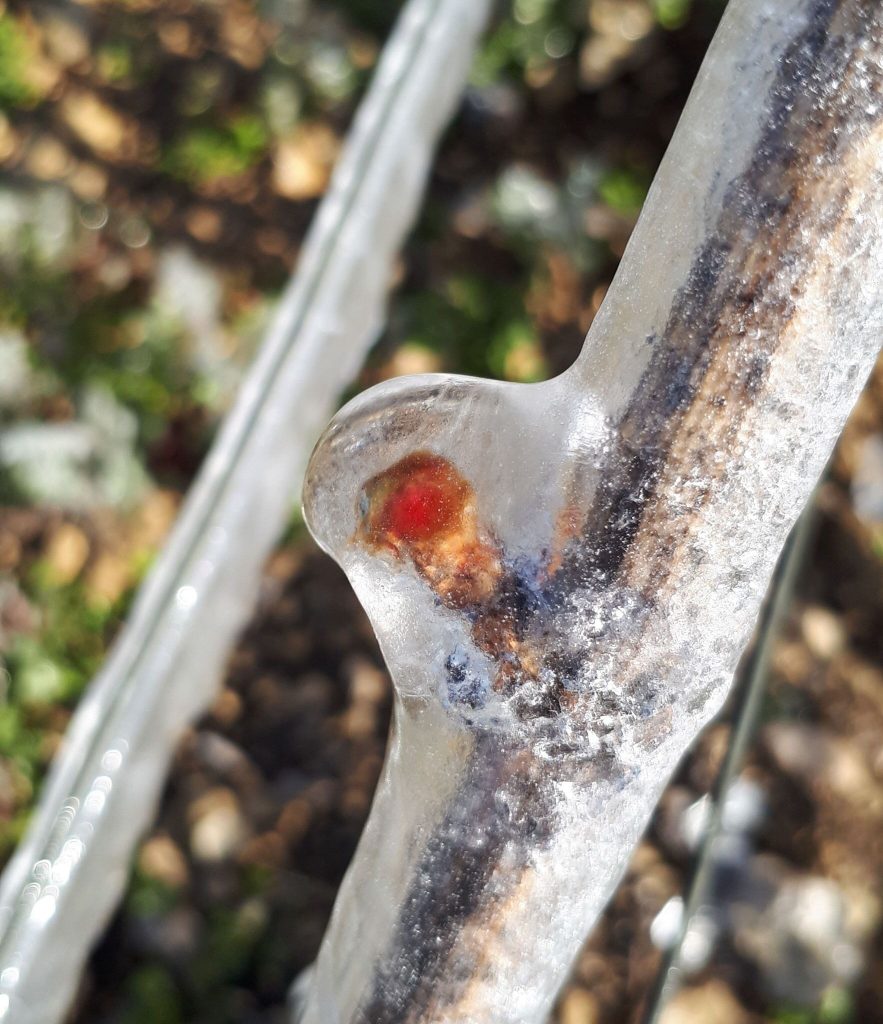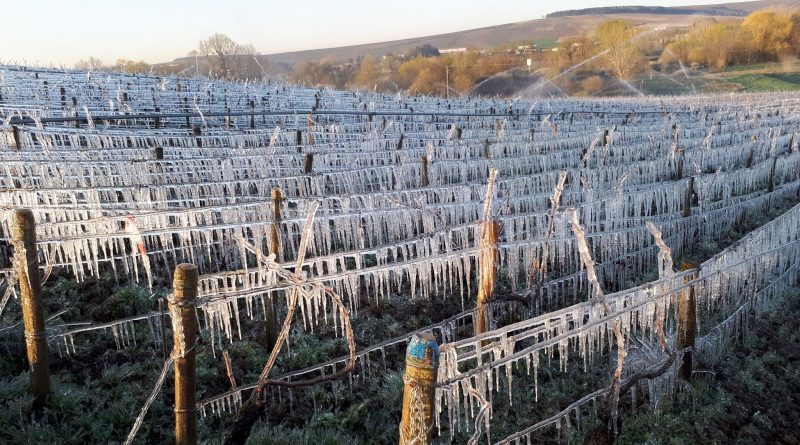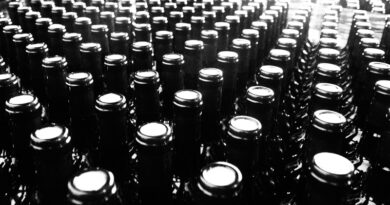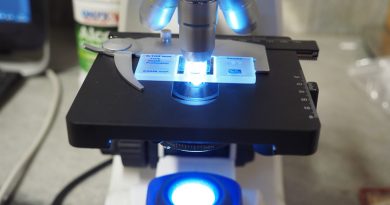Frost protection using sprinklers: how it really works
The PR agency working for Maison Joseph Drouhin recently send out some pictures of frost protection in their Chablis vineyard using overhead sprinklers. The pictures look amazing, but there’s a widespread misconception about how this works.
It’s commonly thought that it’s the ice layer round the buds that provides the protection. People think that this acts as an insulator, and that the ice prevents the temperature of the bud from dropping any further than freezing. This is incorrect.

The technique works via the latent heat of fusion. When a liquid becomes a solid, a small amount of heat is released. One gram of water freezing produces 80 calories. This is what provides the protection, and for it to work, water needs to keep being applied so that there is a water/ice interface and the continued freezing of the water releases heat.
If the water application stops, then things are worse than without the ice: as ice vaporizes, heat is lost. It becomes a refrigeration system. So under windy conditions, a higher rate of water application is needed. Sprinkler systems need a lot of water: around 1.4 million litres/hectare.
One disadvantage of sprinkler systems is that they raise the humidity of the air which means that unprotected neighbouring vineyards will be worse off, as the frost is more severe at higher humidity.
The advantage of the sprinkler system frost protection is that it works with both radiation frosts and advection frosts. Methods such as wind machines and helicopters only work with the former because they rely on an inversion layer of warmer air above the ground.




